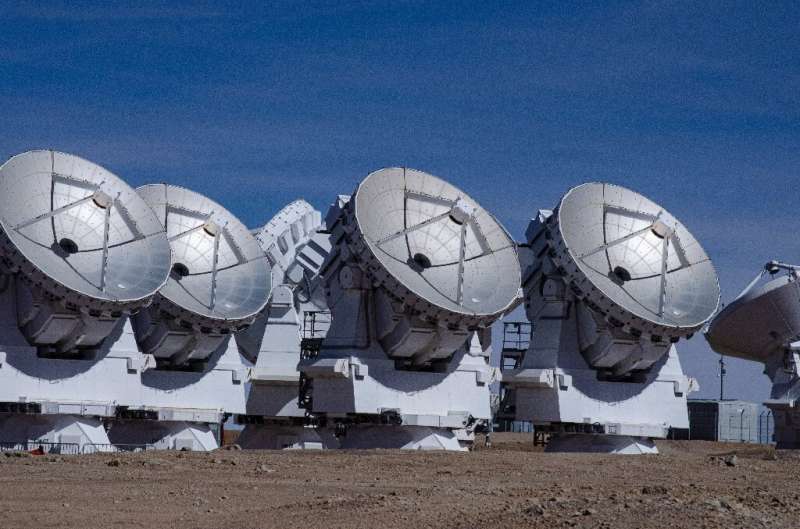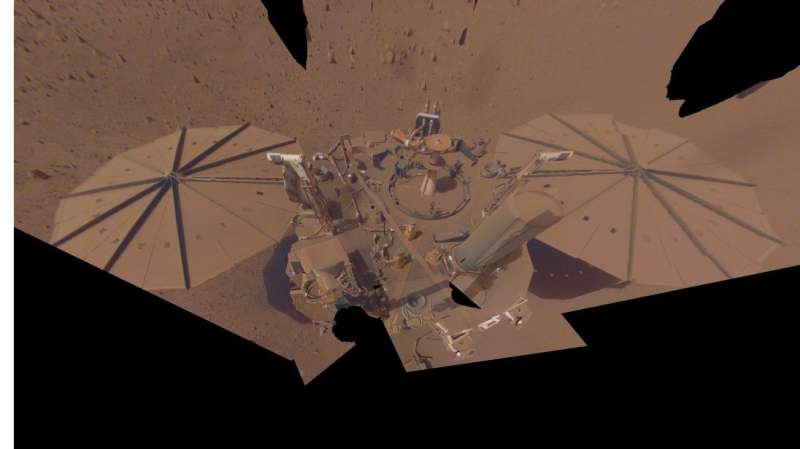
Copernical Team
Resupply mission for NASA carries scientific experiments to ISS
 The 18th Northrop Grumman commercial resupply services mission for NASA to the International Space Station carries scientific investigations of topics such as plant mutations and mudflow structure along with a demonstration of camera technology and small satellites from Japan, Uganda, and Zimbabwe. The Cygnus spacecraft carrying these investigations to the orbiting laboratory is scheduled for li
The 18th Northrop Grumman commercial resupply services mission for NASA to the International Space Station carries scientific investigations of topics such as plant mutations and mudflow structure along with a demonstration of camera technology and small satellites from Japan, Uganda, and Zimbabwe. The Cygnus spacecraft carrying these investigations to the orbiting laboratory is scheduled for li Arianegroup to develop Phoebus for ESA to demonstrate future Ariane 6 Carbon Upper Stage
 ArianeGroup has received a 50-million-euro agreement from the European Space Agency (ESA) to continue the development of PHOEBUS, a super-light carbon composite upper stage demonstrator. This work will enable development of the next Ariane6 upper stage, by raising the maturity level of cryogenic composite technologies.
The objective is to reduce the weight of the upper stage by using carbo
ArianeGroup has received a 50-million-euro agreement from the European Space Agency (ESA) to continue the development of PHOEBUS, a super-light carbon composite upper stage demonstrator. This work will enable development of the next Ariane6 upper stage, by raising the maturity level of cryogenic composite technologies.
The objective is to reduce the weight of the upper stage by using carbo NASA sounding rockets launch multiple science payloads
 Newly proven technology developed at NASA's Wallops Flight Facility near Chincoteague, Virginia, turns a single sounding rocket into a hive deploying a swarm of up to 16 instruments. The technology offers unprecedented accuracy for monitoring Earth's atmosphere and solar weather over a wide area.
The Swarm Communications technology, as dubbed by its NASA Wallops creators, spreads sub-paylo
Newly proven technology developed at NASA's Wallops Flight Facility near Chincoteague, Virginia, turns a single sounding rocket into a hive deploying a swarm of up to 16 instruments. The technology offers unprecedented accuracy for monitoring Earth's atmosphere and solar weather over a wide area.
The Swarm Communications technology, as dubbed by its NASA Wallops creators, spreads sub-paylo NASA makes progress with new Lunar Terrain Vehicle services
 As astronauts explore the South Pole region of the Moon during Artemis missions, they will be able to go farther and conduct more science than ever before thanks to a new Lunar Terrain Vehicle (LTV). Instead of owning the vehicle, NASA plans to contract it as a service from industry.
The draft request for proposals for the LTV Services (LTVS) contract is now ready for industry to review, a
As astronauts explore the South Pole region of the Moon during Artemis missions, they will be able to go farther and conduct more science than ever before thanks to a new Lunar Terrain Vehicle (LTV). Instead of owning the vehicle, NASA plans to contract it as a service from industry.
The draft request for proposals for the LTV Services (LTVS) contract is now ready for industry to review, a NASA probe back on track to reach moon after monthlong mishap in space
 NASA's CAPSTONE CubeSat space probe is back on track to reach the moon later this month after a glitch during engine maneuvers in September caused the craft to spin out of control.
A separate engine burn last week proved successful and set the craft's trajectory to arrive in the moon's orbit on Nov. 13, less than two weeks from now, the agency announced Monday amid a flurry of test miss
NASA's CAPSTONE CubeSat space probe is back on track to reach the moon later this month after a glitch during engine maneuvers in September caused the craft to spin out of control.
A separate engine burn last week proved successful and set the craft's trajectory to arrive in the moon's orbit on Nov. 13, less than two weeks from now, the agency announced Monday amid a flurry of test miss Do you speak extra-terrestrial?
 What does humanity do when we discover we are not alone in the cosmos? A new international research hub at the University of St Andrews will coordinate global expertise to prepare humanity for such an event and how we should respond.
While we might never learn about the existence of life beyond Earth, or even about another intelligent civilisation, there's a chance it could be detected soo
What does humanity do when we discover we are not alone in the cosmos? A new international research hub at the University of St Andrews will coordinate global expertise to prepare humanity for such an event and how we should respond.
While we might never learn about the existence of life beyond Earth, or even about another intelligent civilisation, there's a chance it could be detected soo ALMA observatory in Chile targeted by cyberattack

The ALMA space telescope in the Chilean Andes suffered a cyberattack over the weekend that has downed its website and suspended its work, the observatory announced Wednesday.
ALMA, the world's most powerful telescope for observing molecular gas and dust, studies the building blocks of stars, planetary systems, galaxies and life itself, according to the European Southern Observatory (ESO), its co-operator.
The attack Saturday on ALMA's computer systems did not compromise its powerful antennas or any scientific data, it said on Twitter.
The cyberattack forced the suspension of astronomical observations, left the observatory with limited email services, and its website still offline four days later.
"The threat has been contained and our specialists are working hard to restore affected systems," said the ALMA tweet.
"Given the nature of the episode, it is not yet possible to estimate a date for a return to regular activities," it added.
Space for the future: green steel, sweet air, happy plants

For decades, satellites have been instrumental in monitoring our changing climate and improving our understanding of the processes that drive it. But to achieve our climate goals and make Europe the first climate-neutral continent by 2050, we need ideas that take the next step and begin to use space technologies to actively prevent, slow, reverse or otherwise address these changes.
Ignite your potential! Apply now to the ESA Student Internship Programme

The 2023 internship opportunities at ESA have been published! Opportunities are open for one month and positions are available in engineering, science, IT, natural/social sciences, business and administration services. This is your chance to kick-off your experience in space!
NASA prepares to say 'farewell' to InSight spacecraft

The day is approaching when NASA's Mars InSight lander will fall silent, ending its history-making mission to reveal secrets of the Red Planet's interior. The spacecraft's power generation continues to decline as windblown dust on its solar panels thickens, so the team has taken steps to continue as long as possible with what power remains. The end is expected to come in the next few weeks.
But even as the tightknit 25-to-30-member operations team—a small group compared to other Mars missions—continues to squeeze the most they can out of InSight (short for Interior Exploration using Seismic Investigations, Geodesy and Heat Transport), they've also begun taking steps to wind down the mission.
Here's a glimpse of what that looks like.
Preserving data
The most important of the final steps with the InSight mission is storing its trove of data and making it accessible to researchers around the world.
